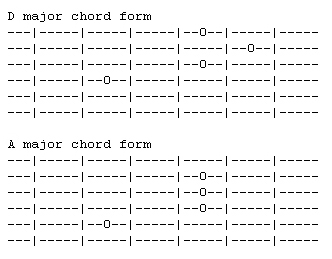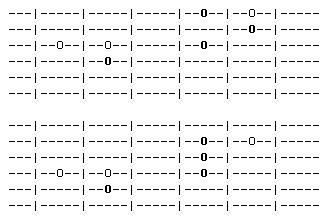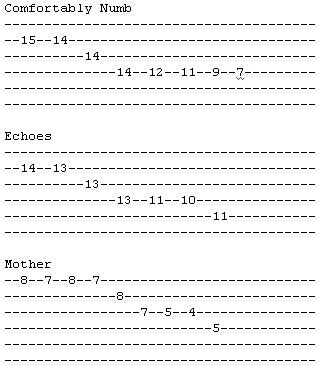
Music
Music class

In this column, I'll be examining Pink Floyd guitarist David Gilmour's gear and playing techniques from a musician's point of view. Please feel free to e-mail me with questions and ideas for future articles. Past articles are now posted here.
In keeping with the Back to School theme of this issue, I'd like to go into a bit about Gilmour's playing. It's incredibly simple, and that's what makes it so effective. I'm going to delve into a little bit of music theory here, but like Gilmour's playing, I'm going to keep things simple.
First, a few of the terms I'm going to use in this article come from an extraordinary series of books that I recommend to all guitarists, the Fretboard Logic book series by Bill Edwards. At the start of his book series, Edwards separates music theory from the guitar fretboard. While music terms include chords, scales and arpeggios, Edwards translates these terms to chord forms, scale forms and lead patterns. For each chord form, there's a corresponding scale form. When the scale forms are joined together, they form lead patterns.
Using this terminology, we're going to look at two chord forms. The first is a D form and the second is an A form:
 |
Next, we're going to add in some extra notes. In each of these scale forms, Gilmour adds in a 4th (the 4th note, or 4th degree of a scale: if your key is A minor, then the 4th tone of the scale is D--for example A, B, C then D). Edwards refers to this pattern as a suspended fourth arpeggio.
The highlighted notes show you the scale forms and how the scales lie within the chord forms.
 |
Finally, we're going to look at Gilmour's guitar work in three memorable songs. In "Comfortably Numb", "Mother" and "Echoes", he uses this same scale form! During "Comfortably Numb", you can hear this pattern at 2:17 into the song. During "Echoes," it's heard at 2:07 and 2:54 into the song. And, in "Mother", you'll hear the phrase at 3:19 into the song.
 |
It's the same pattern of notes, played in different keys with different tempos. In the hands of Gilmour, figuratively and literally, it sounds like three completely different pieces of music!
